Quick Start
Categories:
Introduction
By the end of this chapter, you will have:
- Configured the only required settings for a quick start with ALS’s default settings.
- Started your first stacking session and obtained your first results.
In the shoes of the character…
Throughout this journey, you will embody a new ALS user:
-
Username: Your username is astrogeek
-
System used: You use ALS on a Linux system
-
Organization of subs: Your acquisition system saves the subs in the astroshots folder of your home directory, organized by target with subs in Light subfolders.
Example: Session on Messier 27, the subs are saved in the astroshots/M_27/Light folder.
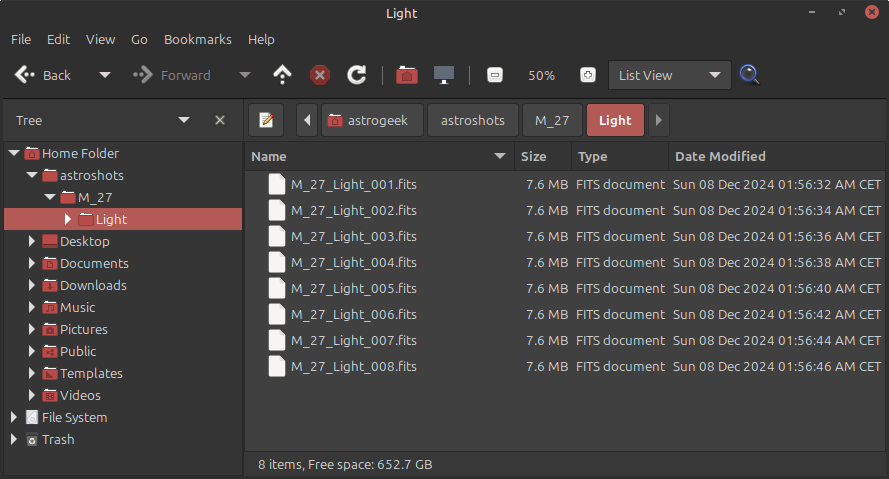
Placement of raw images
Initial Configuration
On the first start, ALS welcomes you and asks you to define two essential settings:
- Scan folder: The folder where ALS monitors the arrival of new subs.
- Work folder: The folder where ALS saves the produced images.

Welcome message
🖱️ Click OK to access the preferences.
Configure Critical Folders
The critical folders for ALS operation are:
- The Scan folder: ALS monitors the arrival of new subs in this folder.
- The Work folder: ALS saves the produced images in this folder.
Scan folder
Configure ALS to monitor the astroshots folder:
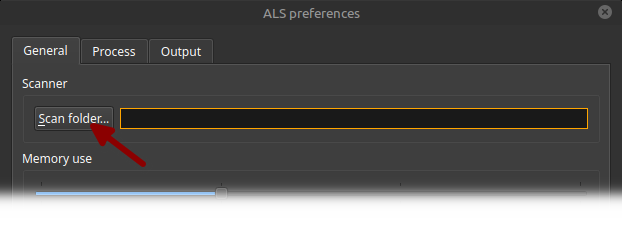
Button to set the scan folder
🖱️ Click Scan folder.... A folder selector appears…
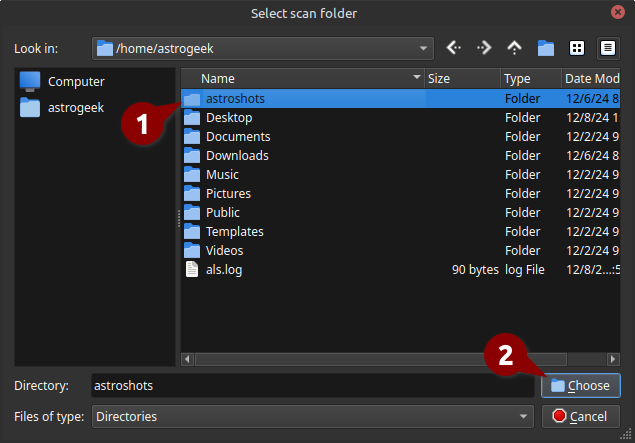
The scan folder selector
- 🖱️ Select the astroshots folder.
- 🖱️ Click
Choose.
Work Folder
Create a subfolder for ALS named als_output in your home directory:
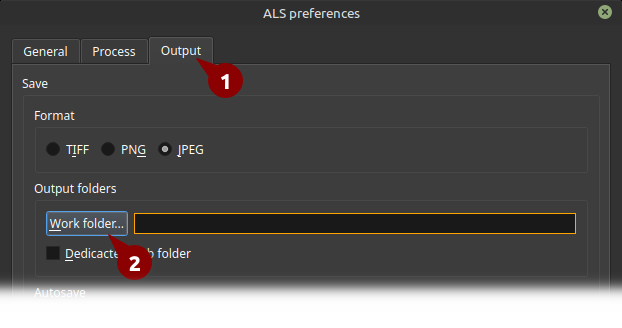
The file output settings
- Switch to the Output tab
- 🖱️ Click
Work folder.... A folder selector appears…
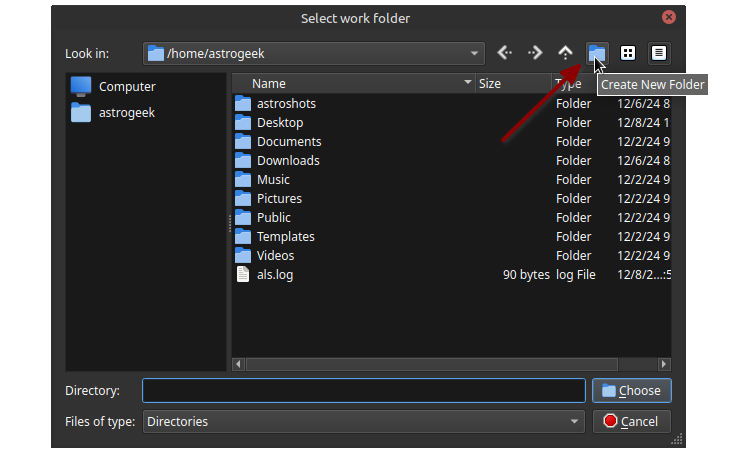
Button to create a new folder
🖱️ Click Create new folder.
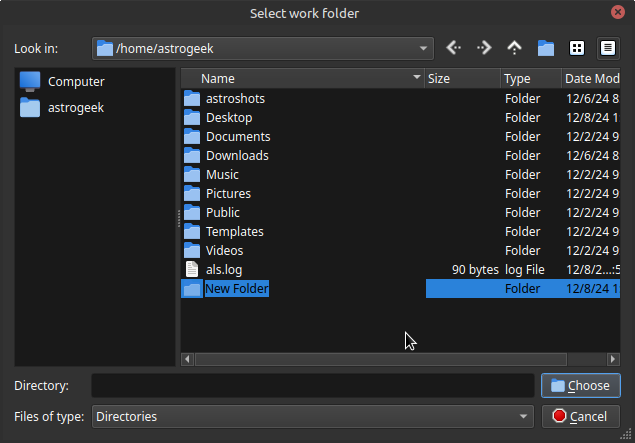
New folder ready to be renamed
A new folder appears, ready to be renamed.
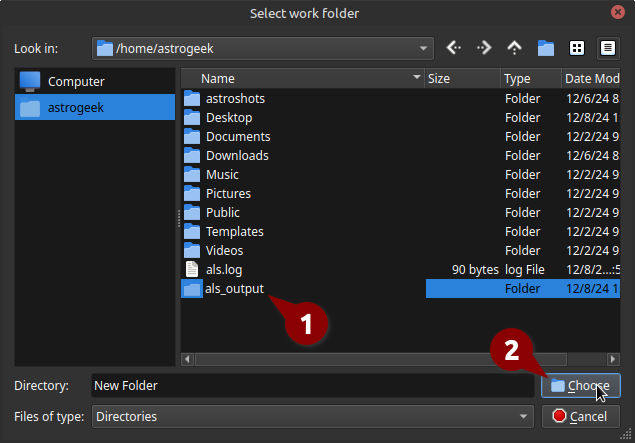
New folder renamed and confirmed
- ⌨️ Name it als_output.
- 🖱️ Click
Choose.
🖱️ Switch back to the General tab.
Usage Statistics
It is very useful for us to know which versions of ALS are being used and on which platform.
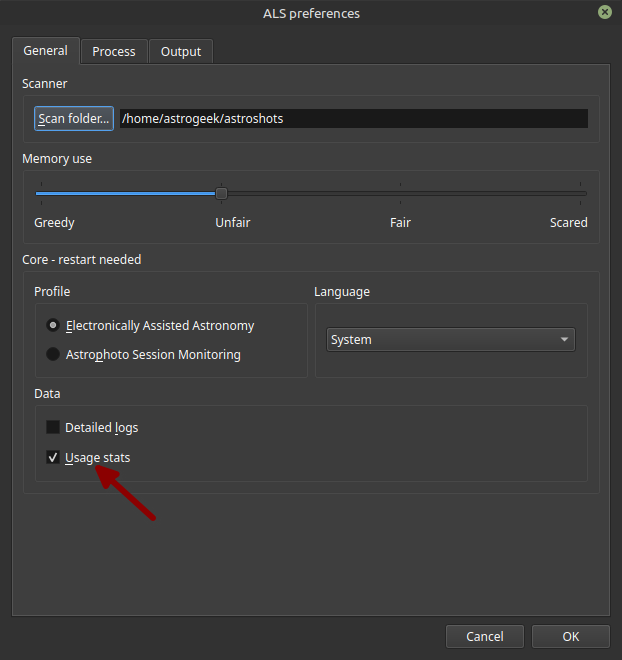
Checkbox indicating the choice to send usage statistics
We would be very grateful if you allow ALS to send us usage statistics, but we also understand that you may be reluctant to enable such a feature.
Please note that:
- ALS will only send the following information at each startup:
- ALS version.
- Processor type.
- Operating system type.
- We do not seek to identify or geolocate the source of this information.
Click here to see how you can verify these claims yourself
ALS and our tracking tools are opensource software, their source code is publicly available.
🖱️ Once you have made your choice, click OK to confirm the preferences.
Your Very First Session

ALS ready to start its very first session
Starting the Session

The session start button
🖱️ Click START in the session section at the top left
ALS confirms the successful session start:
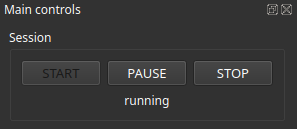
The session control buttons and session status are updated

The session log displays the latest events and the status bar is updated
🎛️ Now start the acquisitions with your usual system. ALS detects and processes each new sub.
As an example, we will illustrate the following sections with a session on Messier 27: ZWO ASI224MC camera, 200 x 4 sec. subs
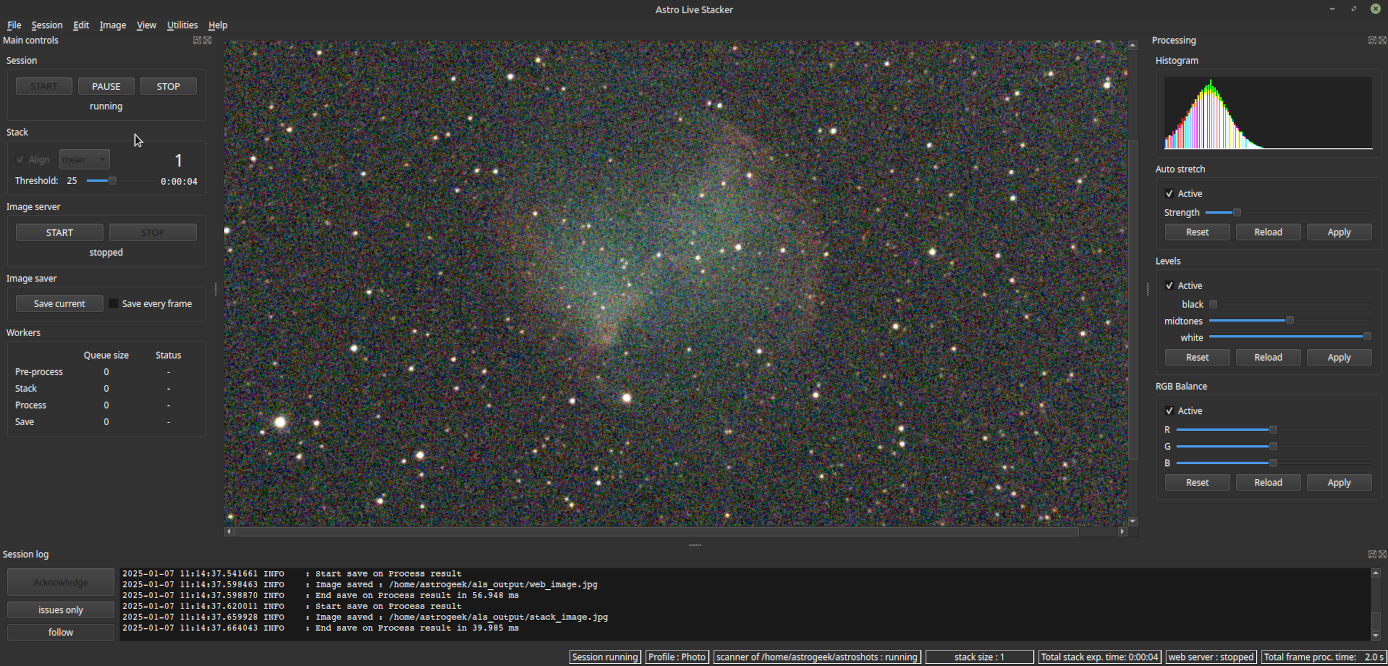
ALS after processing the 1st sub
All new subs are first aligned to this reference and then stacked by averaging with all previously processed subs.
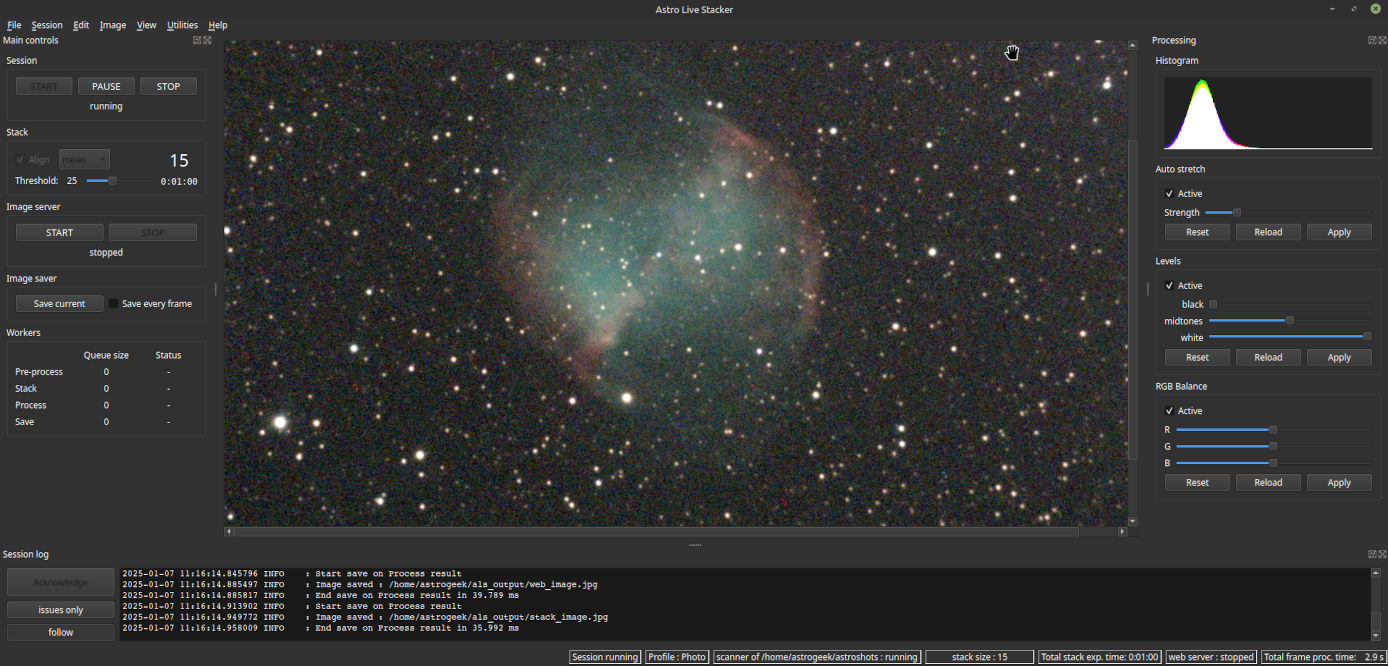
ALS after processing the 15th image. Contrast and noise improve
After each alignment and stacking of a new sub, ALS automatically adjusts the brightness and color balance before displaying the result in the central area.
As you stack more subs, you will see the result gain in contrast and detail. The grainy appearance of the sky background will gradually fade away.
Explore
Let ALS work on the subs that keep coming in and lose yourself a bit in the central area:
- 🖱️ Zoom in and out using your mouse wheel
- 🖱️ Navigate the image by dragging it, like with any other viewing software
- 🖱️ Reset the zoom by right-clicking in the image
The image in the central area is instantly updated after each sub is processed, with no impact on navigation.

ALS after processing the 200th image. A beautiful, detailed, and smoothed image
This quick start guide does not cover the other features and settings of ALS. However, ALS has been designed to be very intuitive. Feel free to explore and experiment with the various controls located on the right side of the screen in the Processing section.
Stopping the Session
Our express guided tour is coming to an end, stop the current session.
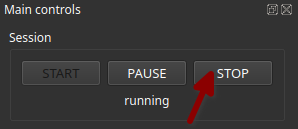
The session stop button
🖱️ Click STOP in the session section at the top left. A confirmation window appears…

Session stop confirmation window
🖱️ Click Yes
You will find the final result of this session in the file named stack_image.jpg saved in the work folder
ℹ️ Linux Systems
This section is exclusively for ALS users on Linux, whether on PC or Raspberry Pi
Creating a system launcher for ALS
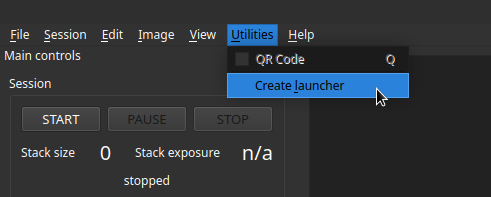
Launcher creation menu
🖱️ Open the Utilities menu and select the Create launcher item. A file selector appears…
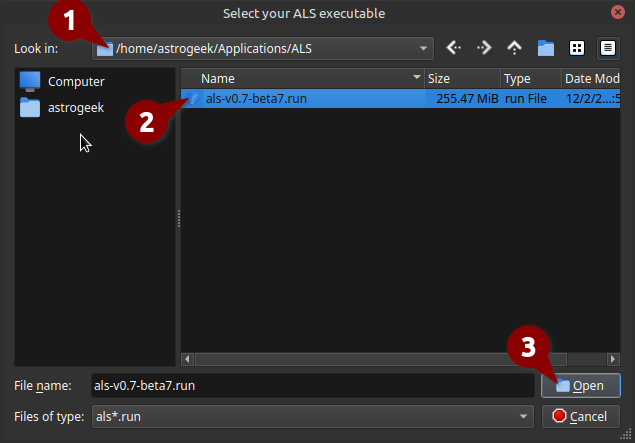
File selector for PC
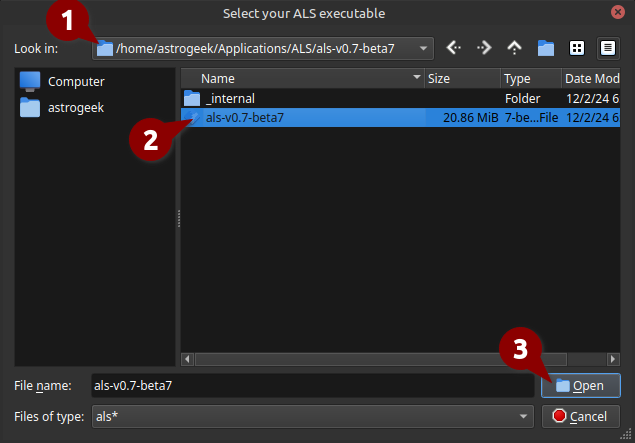
File selector for Raspberry PI
- 🖱️ Browse to the folder where ALS is located
- PC: Browse to
/home/astrogeek/Applications/ALS - Raspberry PI: Browse to
/home/astrogeek/Applications/ALS/als-v0.7
- PC: Browse to
- 🖱️ Select the executable
- PC: Select the file
als-v0.7.run - Raspberry PI: Select the file
als-v0.7
- PC: Select the file
- 🖱️ Click
Open
ALS confirms the successful creation of the launcher
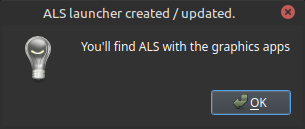
Launcher creation confirmation window
You can now easily start ALS using your system menu
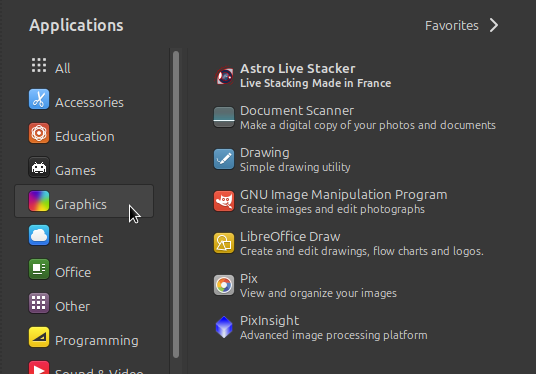
ALS in the Graphics section of the system menu
Conclusion
ALS is now properly configured and ready to process your subs with its defaults settings.
You have just completed your first stacking session and obtained your first result.
Next step: diving in our user guide